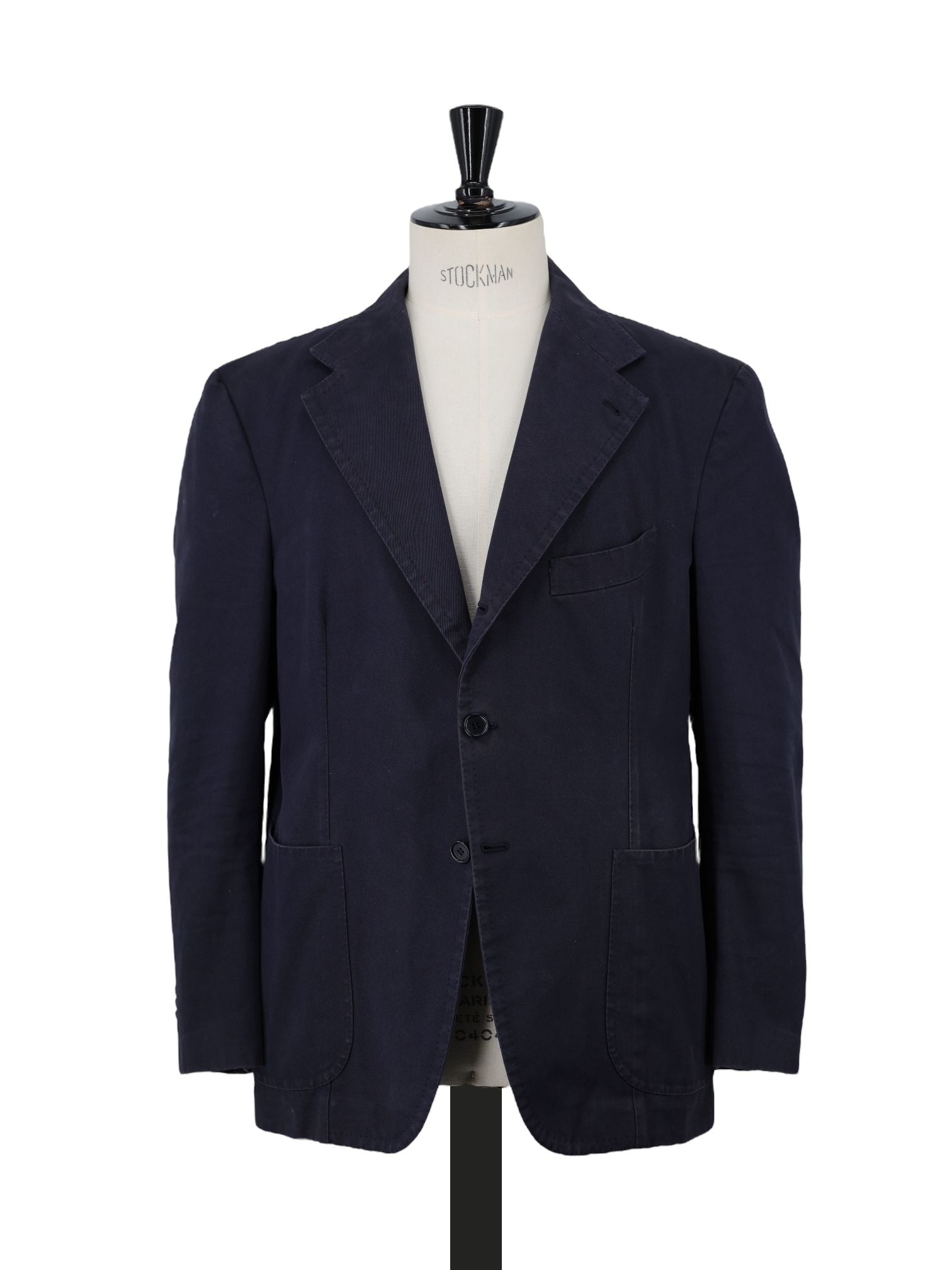
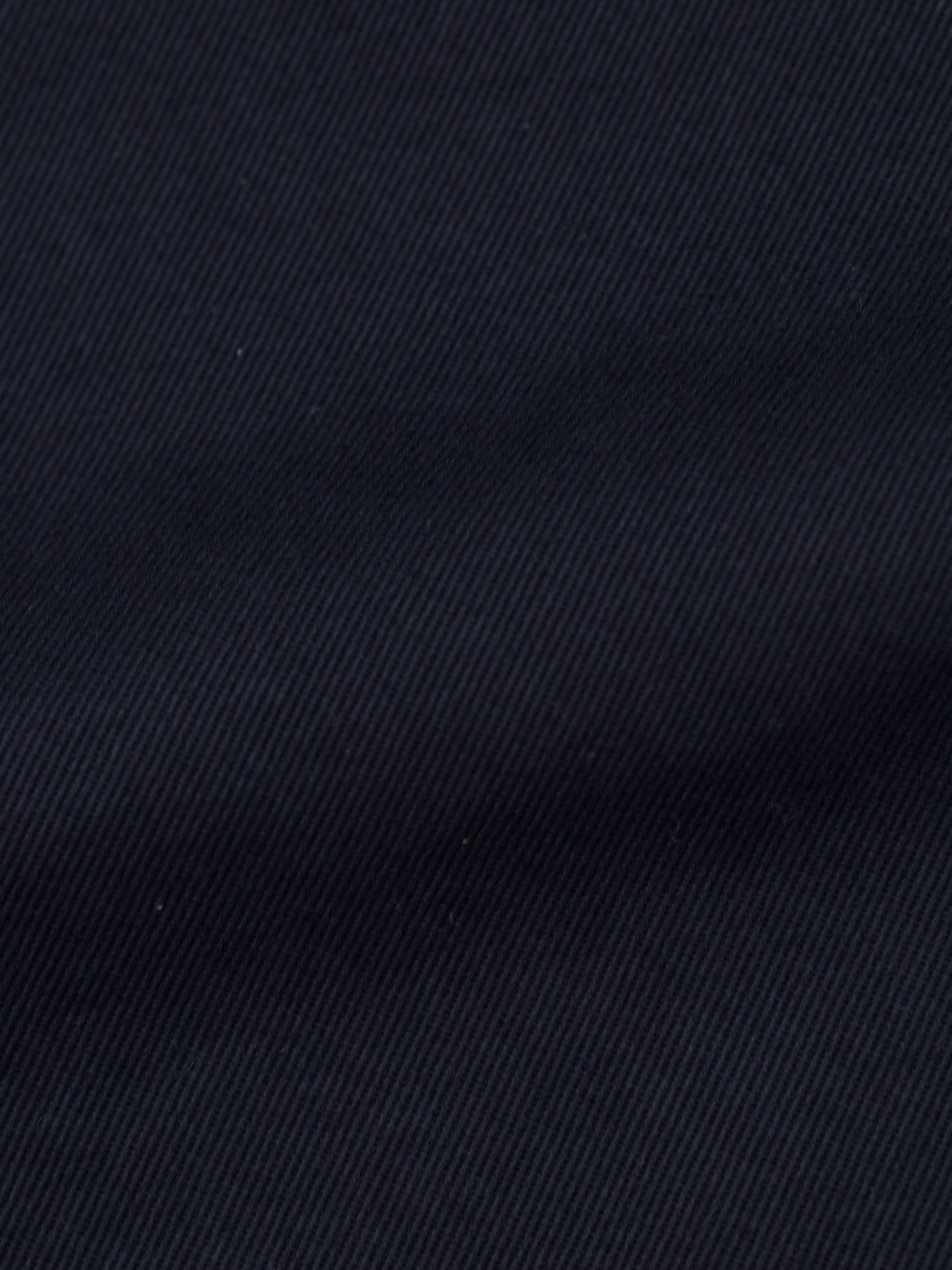
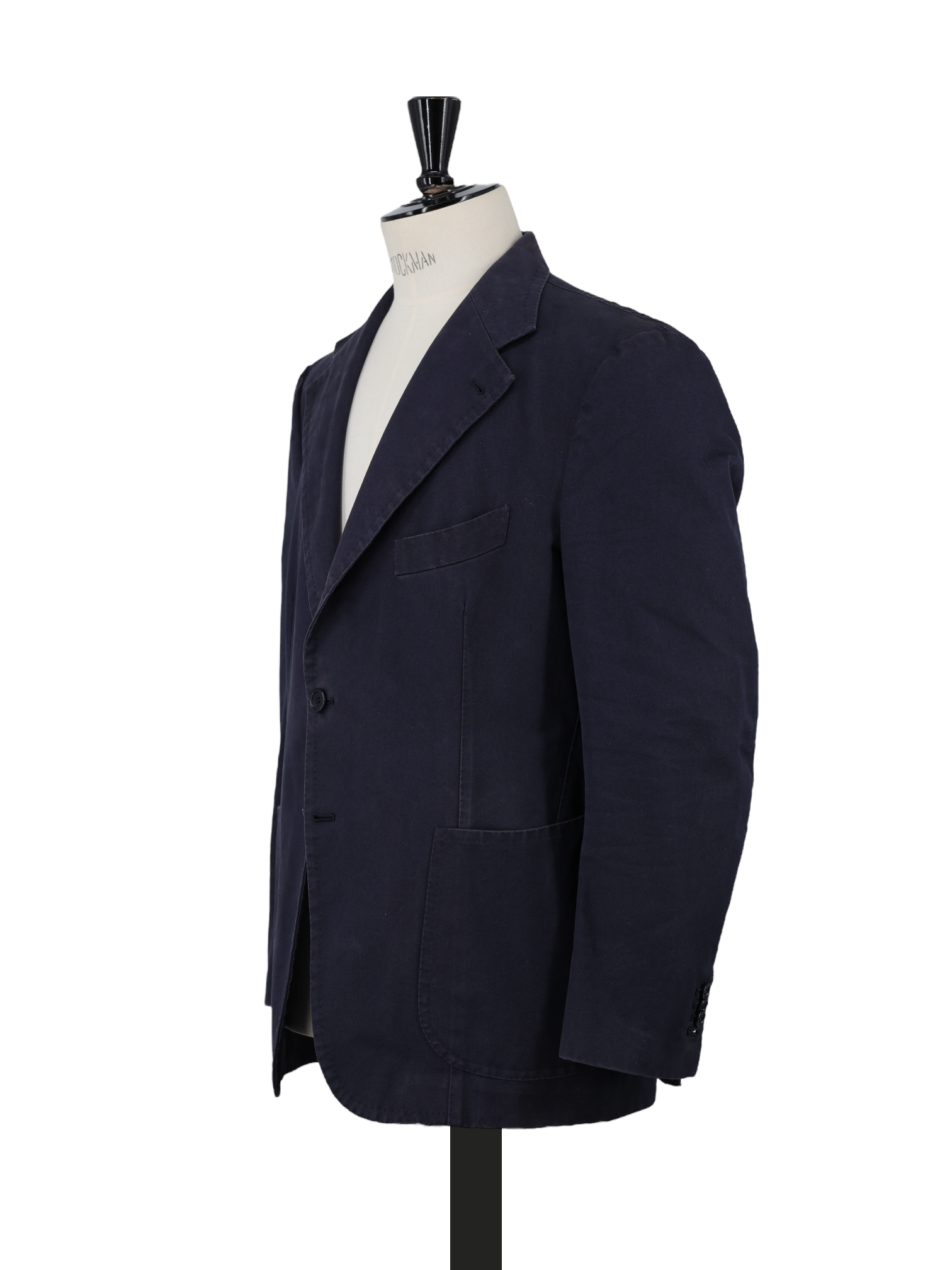
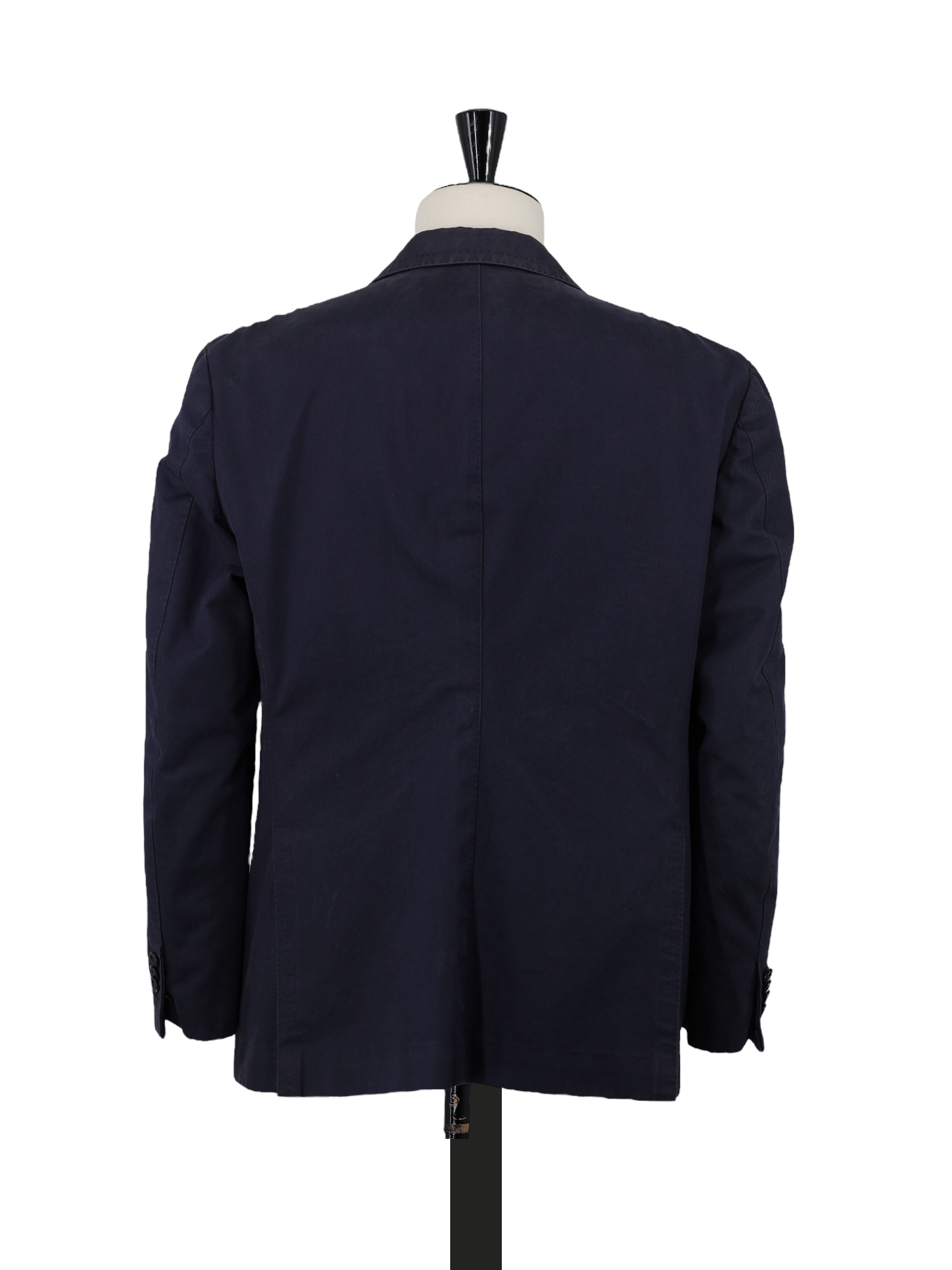
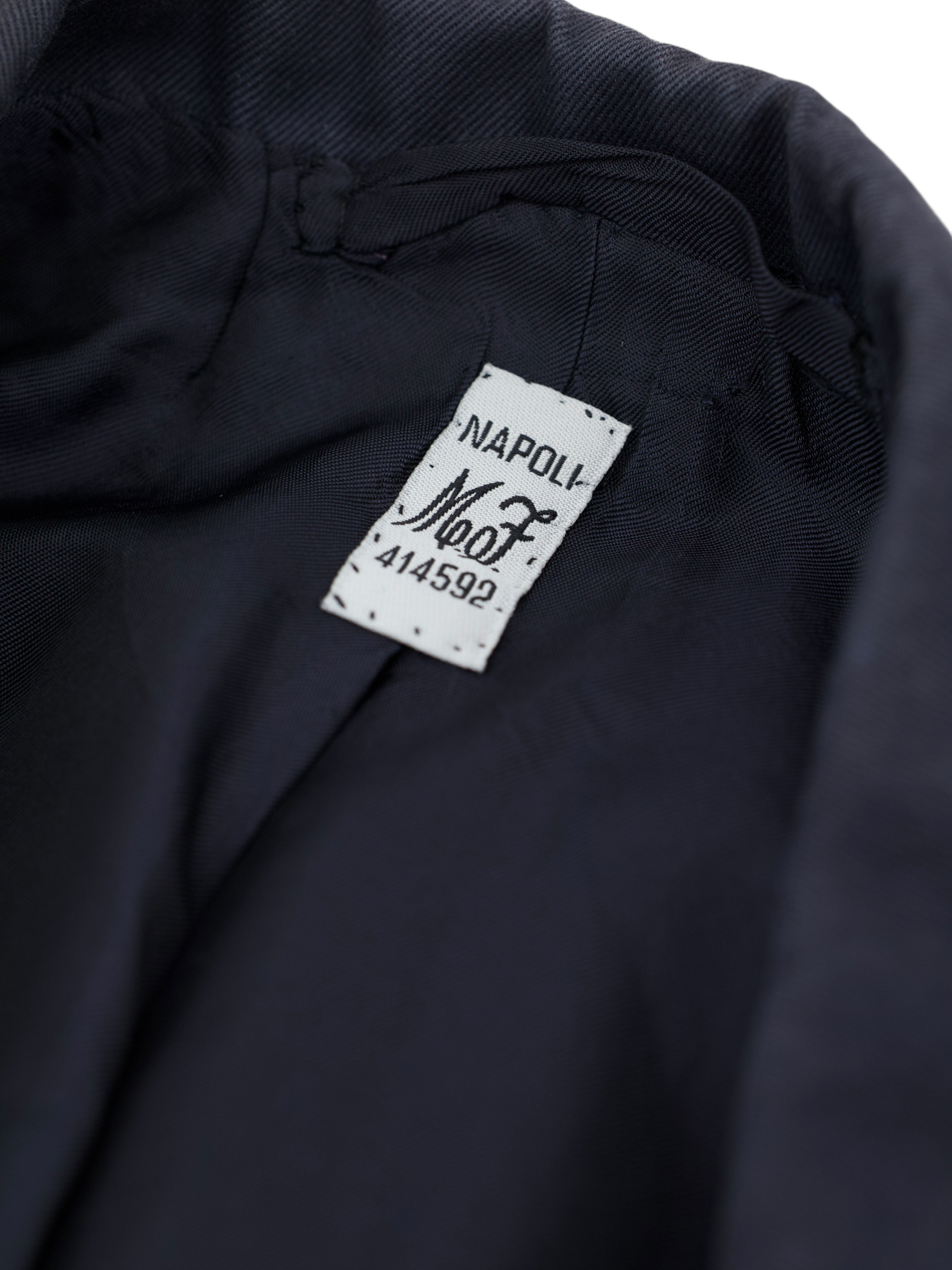
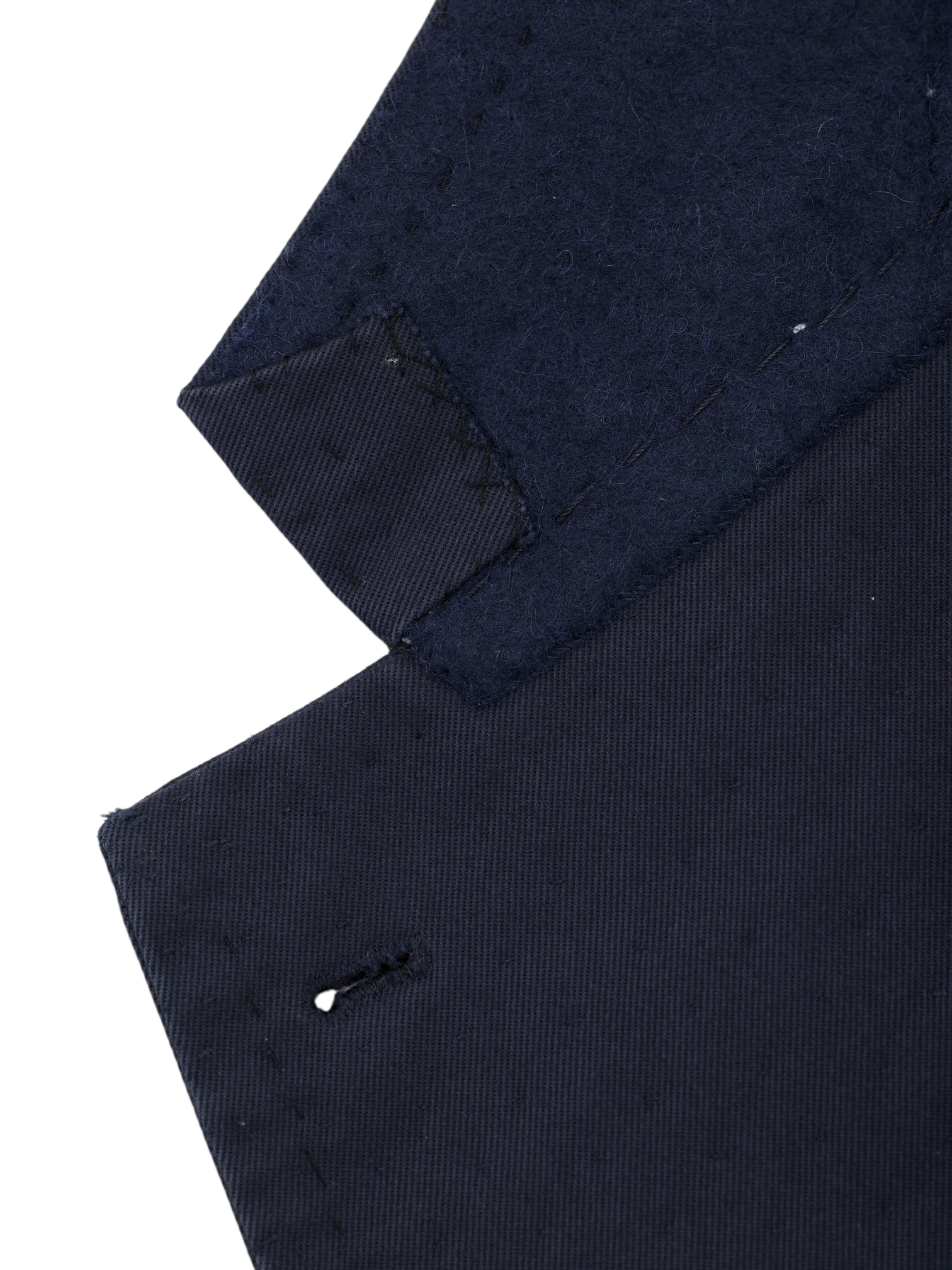
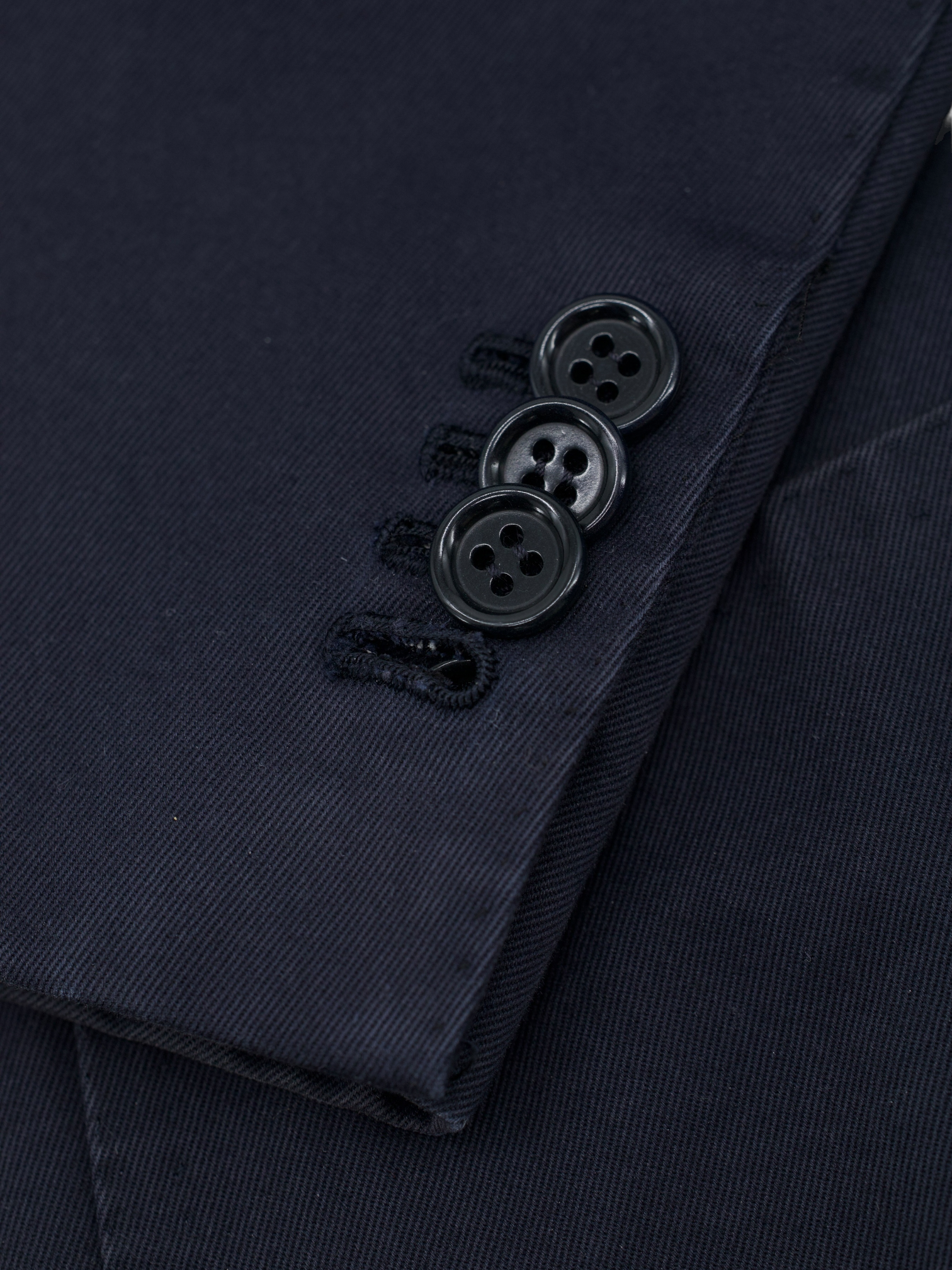
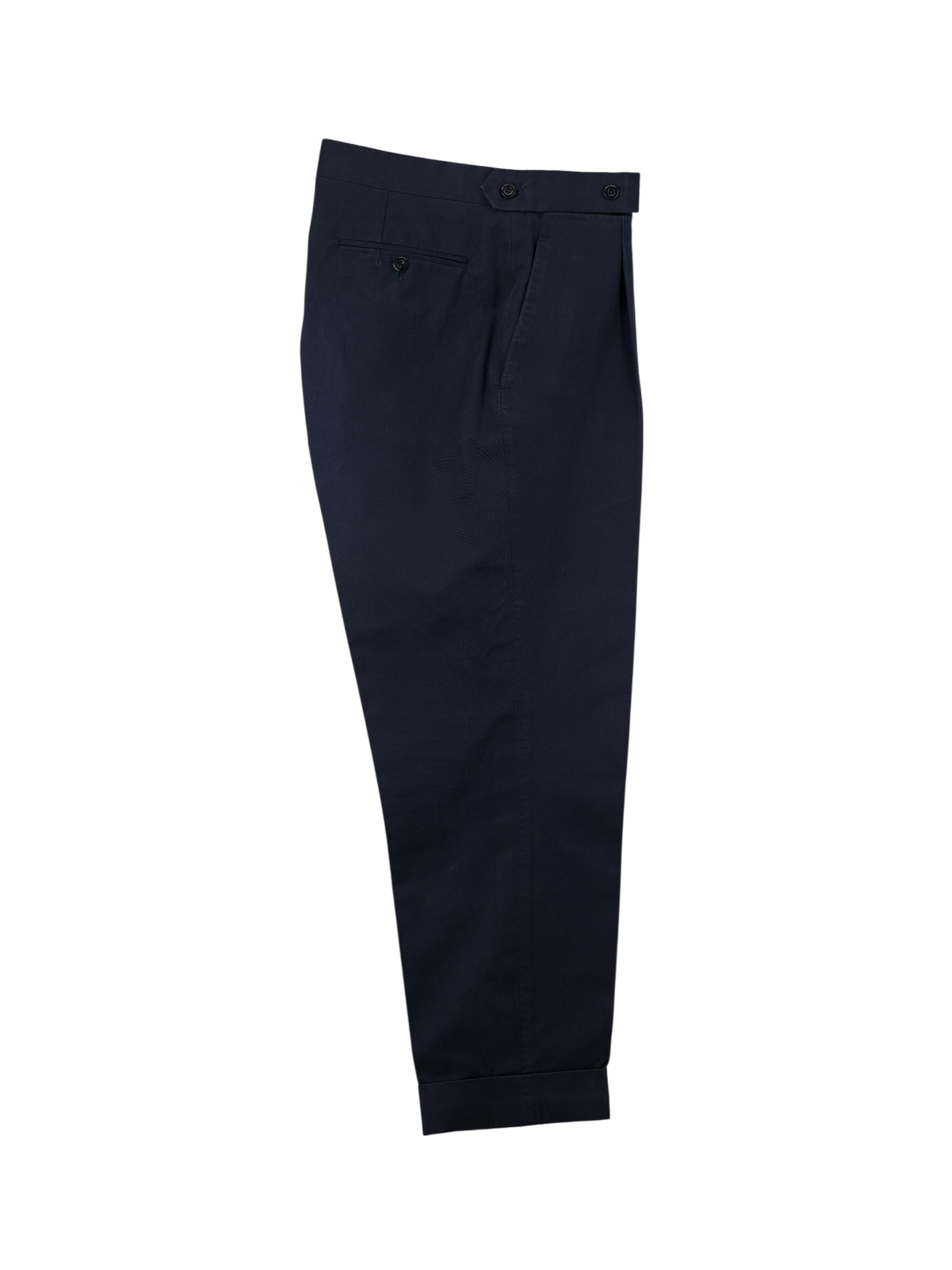
Sartoria Formosa x Ambrosi Navy Heavy-Cotton Twill Neapolitan Suit
54 IT / 44 US / Extra Large
Discover the Sartoria Formosa x Ambrosi Navy Heavy-Cotton Twill Neapolitan Suit, a deep-toned expression of tactile refinement shaped by two of Naples’ most revered artisans. The jacket, tailored by Sartoria Formosa, features the soft, natural line of the spalla camicia shoulder, a gracefully rolled notch lapel, and open quarters that lend the silhouette an effortless, masculine elegance. Fully unlined for breathability and comfort, it’s cut from a dense navy cotton twill woven by Brisbane Moss, whose rich depth of colour and texture gives the suit a grounded sophistication. The accompanying trousers, made by Ambrosi, offer a flattering mid-rise profile with gently extended waistband tabs and softly tapered legs.
Sartoria Formosa’s commitment to balance and architectural softness finds a perfect counterpoint in Ambrosi’s sculptural precision, every pleat, seam, and bar tack executed with fastidious care. Brisbane Moss’s heavyweight cotton twill, a millennial British cloth with a naturally brushed surface and sturdy drape, lends the suit a rare versatility: formal enough to anchor a tie, yet relaxed enough for an open-collar shirt. The jacket’s lapels are shaped and attached entirely by hand, while the trousers receive Ambrosi’s signature internal waistband construction, designed to sit cleanly without pulling or sagging. Together, they form a quietly commanding ensemble that speaks fluently in the language of Neapolitan craft. Discover the elaborated sartorial details below.
Composition: 100% Cotton
Color: Navy
Pattern: Twill
See how we measure our sartorial items
Discover the customization possibilities by visiting our tailor alteration guide
Shipping
- Complimentary shipping on orders over €200 (Netherlands), €500 (EU), and €1,000 (rest of world).
- Orders under these amounts: shipping rates depend on your country.
- Customs duties or import fees may apply and are the customer’s responsibility. The courier may charge additional fees.
Returns
- You have the right to return your order within 14 days of delivery.
- If you wish to return an item, please notify us within 48 hours of receiving your order.
- Return shipping is at the customer’s expense.
- A 10% restocking fee will be deducted from your refund for all returns.
Please carefully review all measurements and quality control notes in the listing before purchasing. Return shipments have an environmental and economic impact. For any questions or if you need help, feel free to contact us before placing your order.
General Note: While we inspect each item to ensure its quality, please note that minor imperfections may be present due to the preloved nature of the garments. We strive to represent every item accurately, but subtle signs of wear may sometimes go unnoticed. We appreciate your understanding and commitment to sustainable luxury.
Choose options








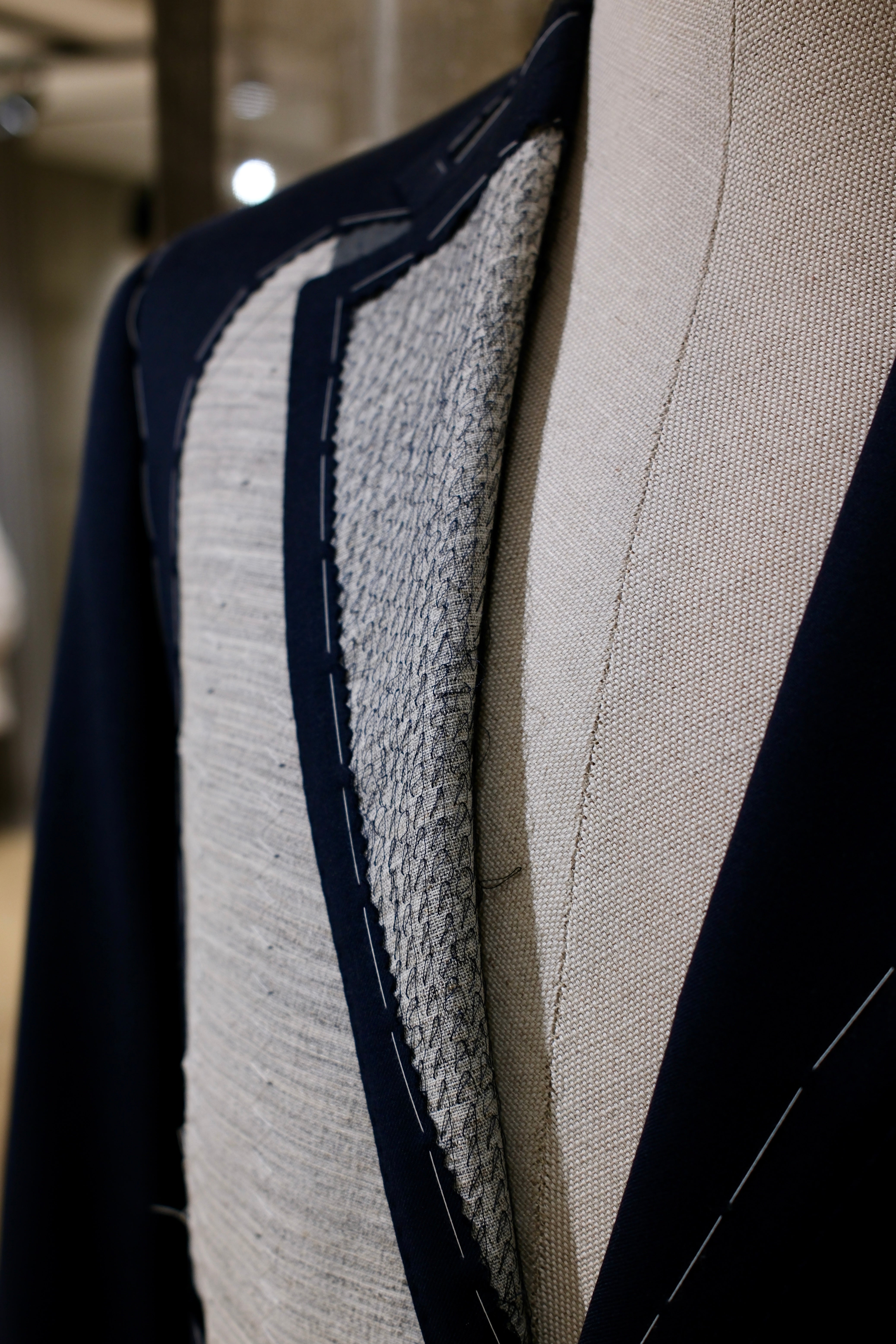
Discover the
Sartorial Details

Full Canvas Construction
A sartorial jacket - or coat - needs an interlining that will help give it shape and mold it. Canvas gives the item a tailored and crafted look. In short, it breathes life into it. Purely technical, canvas is made from either horsehair, wool, mohair or camel hair. It could also be a mix of them all, with varying thickness and weight. The canvas is stitched to the jacket, often by hand, thus making the canvas pieces 'floating' in the middle of the inner and outer cloth. This gives the jacket added flexibility. The canvas runs from the upper parts, all the way down to the end of the jacket. After you wear your canvassed suit for a while, it will begin to take your shape and look incredibly natural.
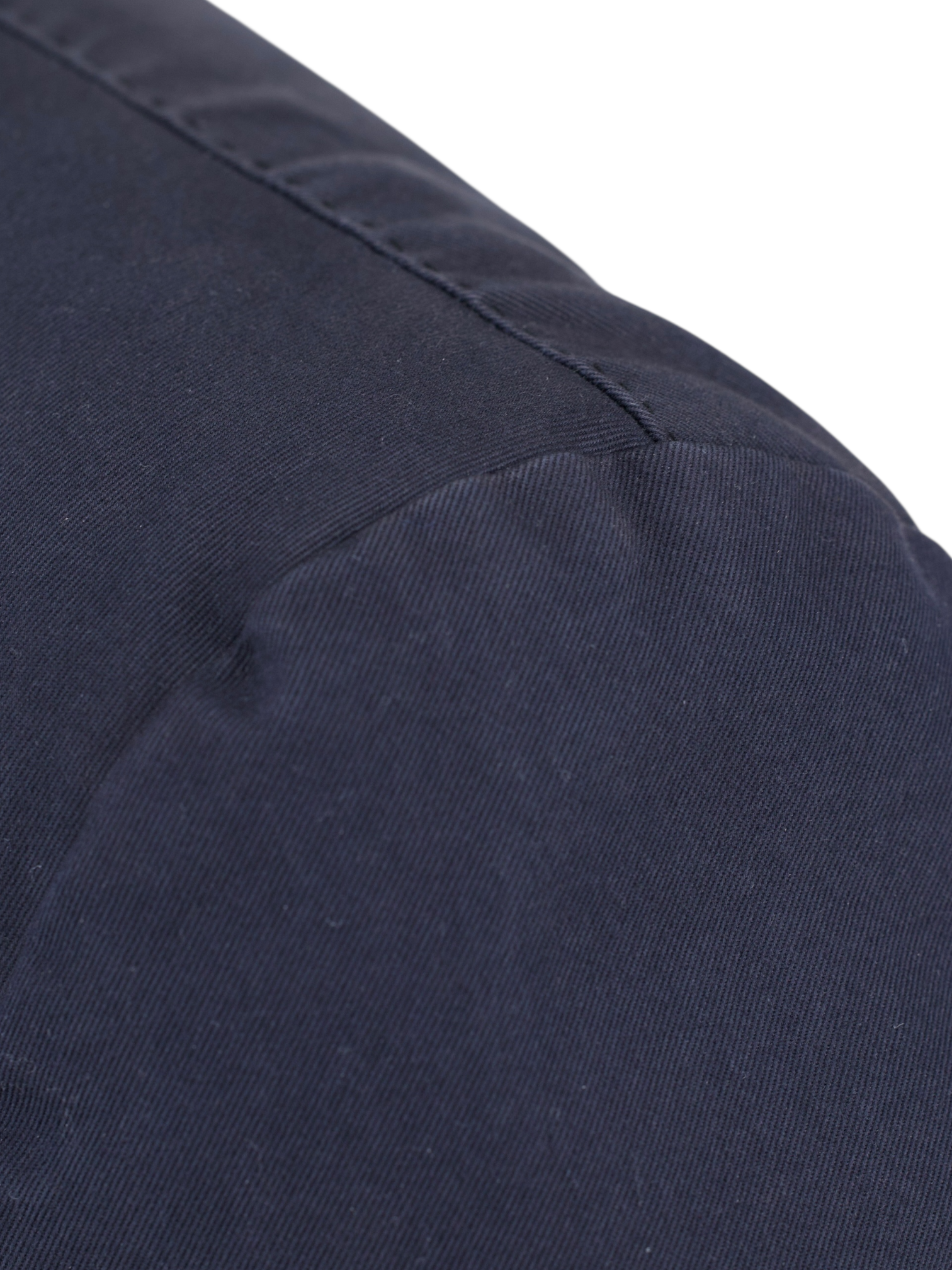
La Spalla Camicia
Spalla Camicia roughly translates to 'shirt sleeve' in Italian and is a shoulder style created and popularized by Neapolitan tailors. The name 'shirt sleeve' was so coined due to the characteristic shirring found at the sleeve's head where the fullness of the larger sleeve collapses. Rather than having the head of the sleeve turned back and stitched inside, the head is lapped under and stitched along the top.
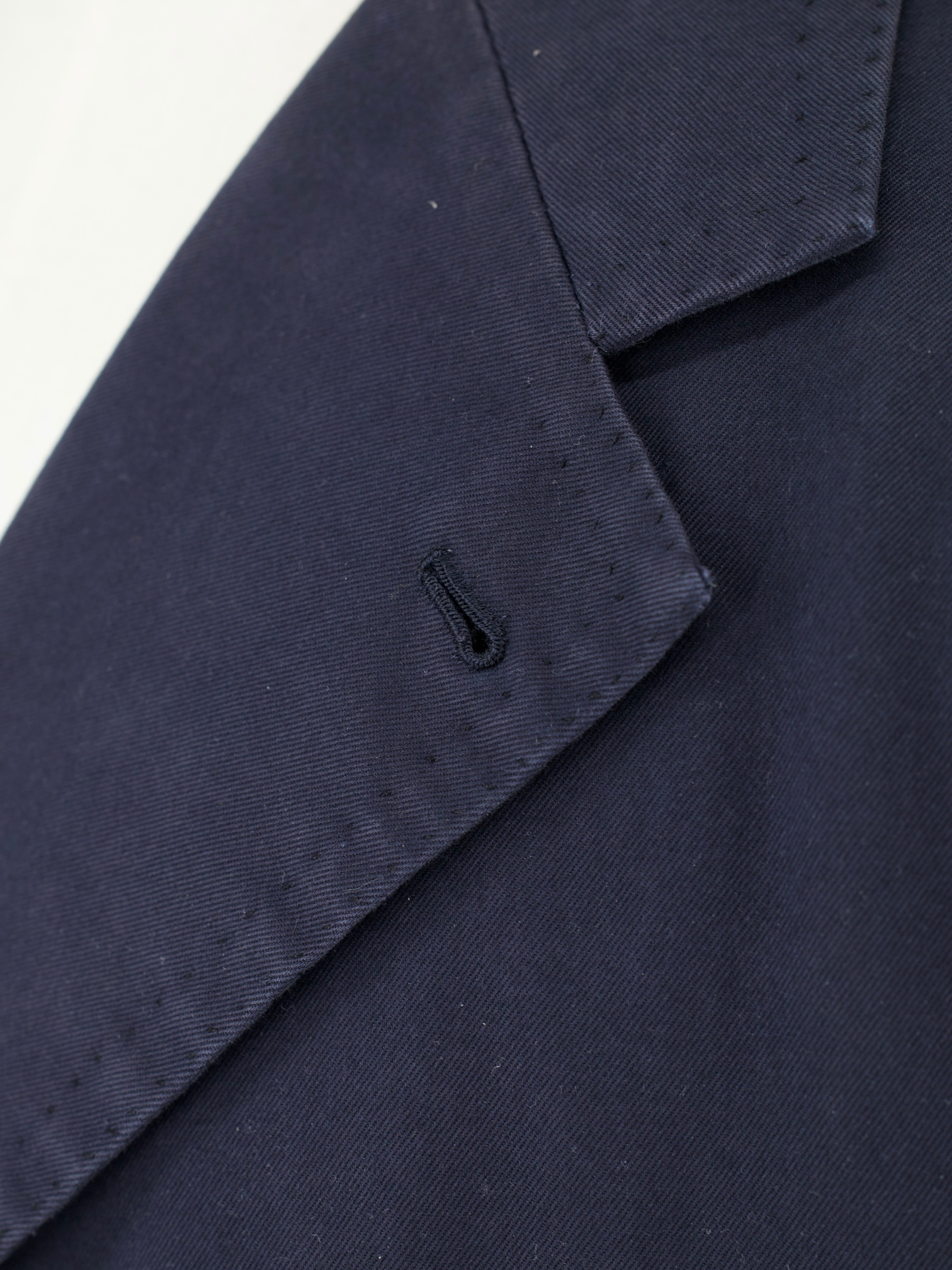
Handmade Buttonhole
Handmade buttonholes are made using a chain of knotted loops called purl stitches that make them strong and visually distinctive. It takes about five seconds to sew a regular buttonhole with a machine – a single handmade buttonhole takes about 10 minutes to sew.
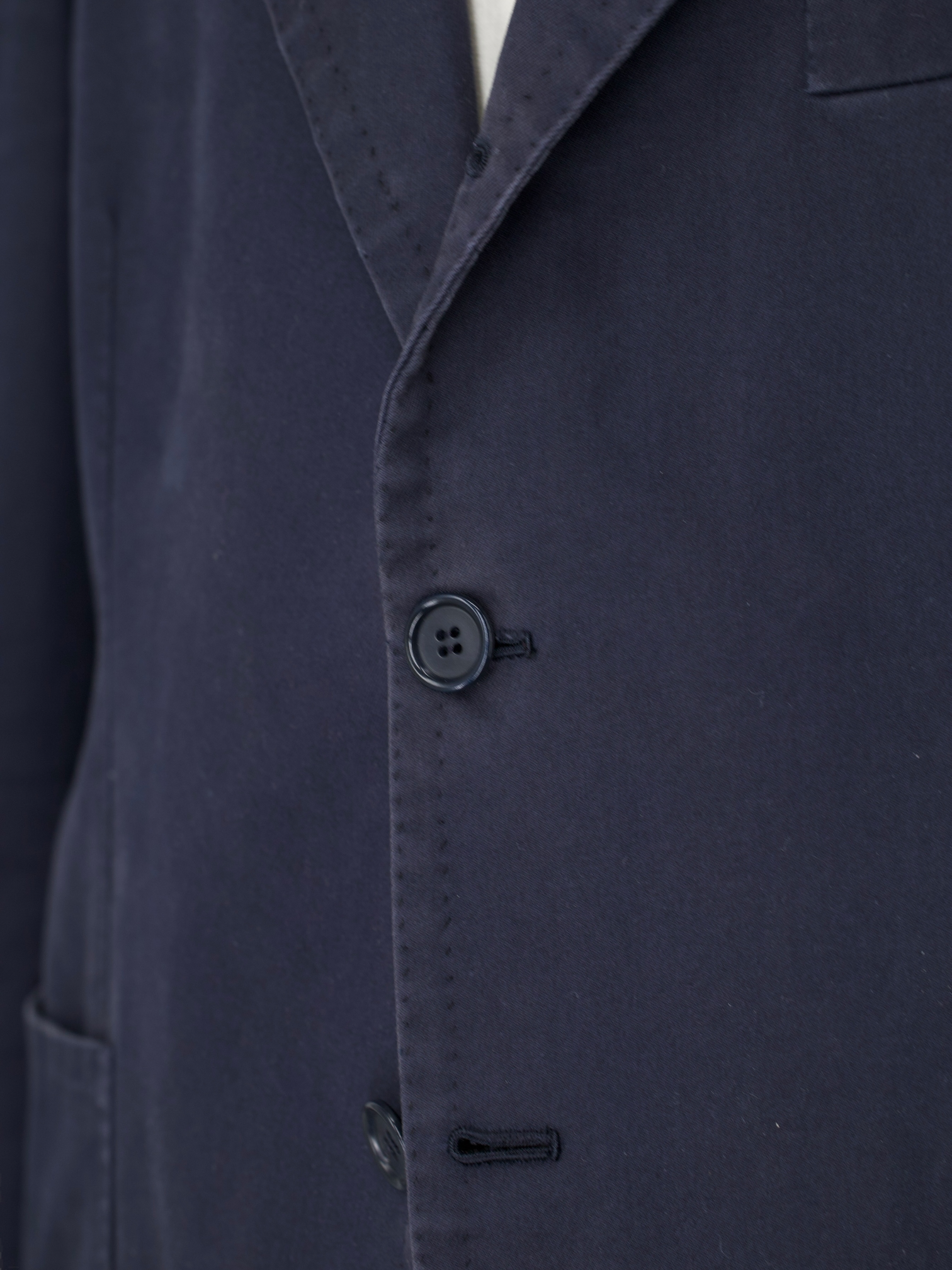
2.5 Button Closure
The ‘tre bottoni stirato a due’, also known as the three rolling on two lapel style, is perhaps the most infamous characteristic of the Neapolitan style jacket. The top button and buttonhole are ornamental, so are left unbuttoned. As the lapel rolls down it elegantly folds over the top button and stops just 4 cm above the second button creating the distinct roll of the lapel the style is known for. As it is intended to remain unbuttoned, the top buttonhole is actually made inside out so the beautiful side will still be visible.
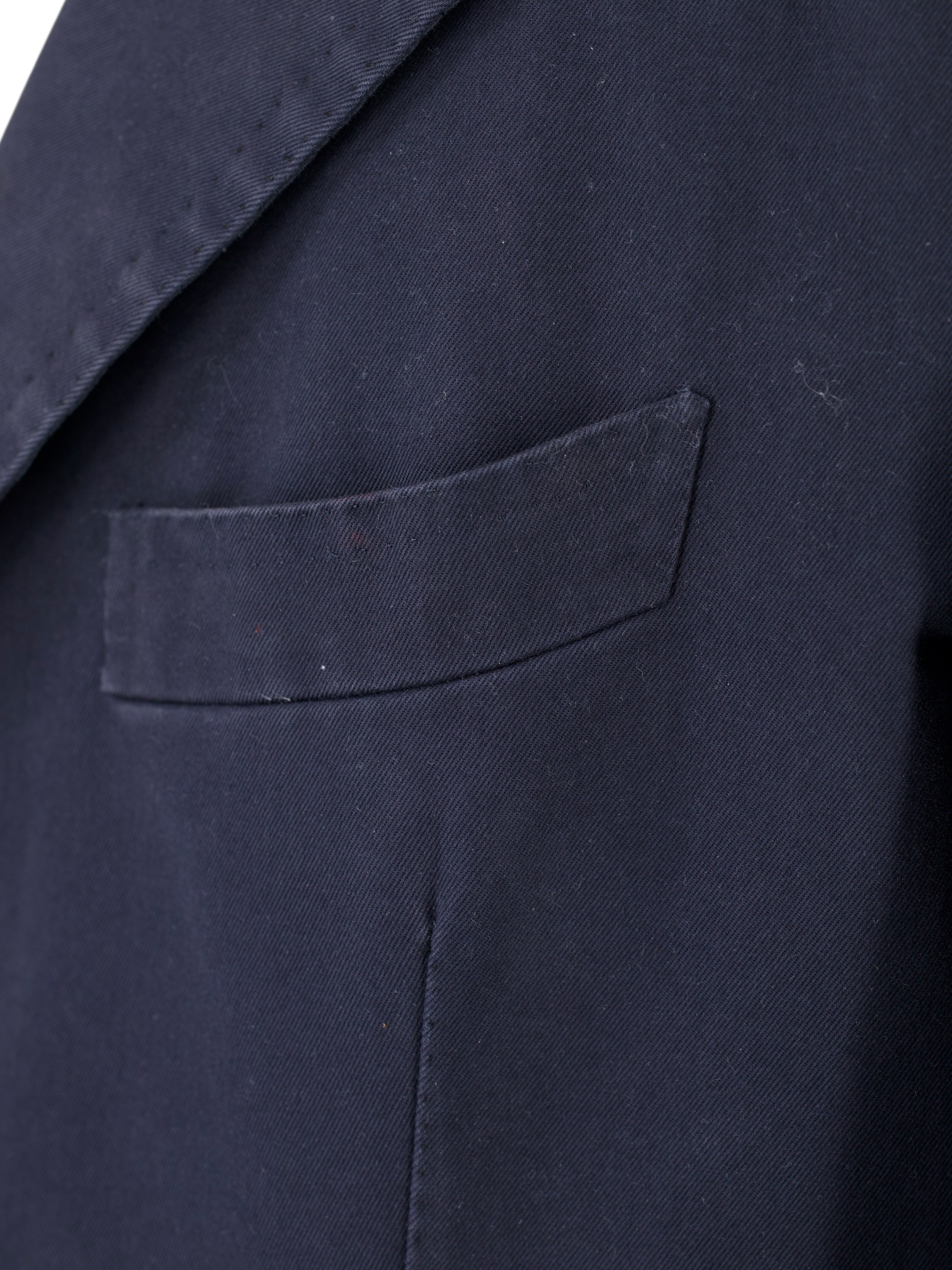
Barchetta Chest Pocket
The barchetta pocket is often thought to be a tailoring detail exclusively from Italy. The word “barchetta” is Italian for “little boat.” It describes how the pocket floats on the chest, gently angled upwards, like the bow of a sailboat.
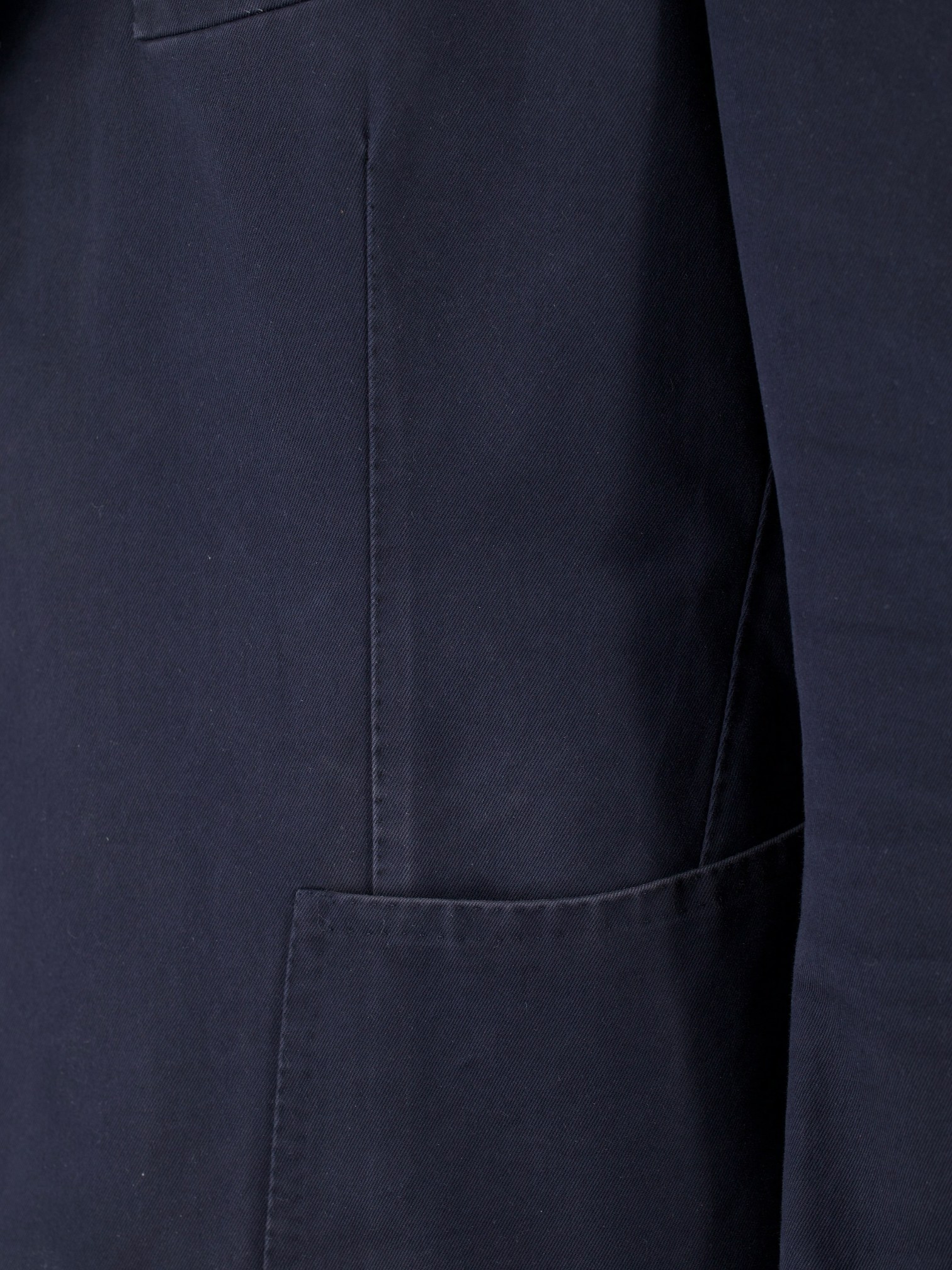
Darts
The tailors adds two darts - think of them as pinched seams - to ensure the jacket’s body achieves a slim silhouette. The process, called mezzo punto riprese, is done entirely by hand.

Kissing Buttons and Handmade Buttonholes
Also known as stacked buttons or waterfall buttons, kissing buttons are associated with Italian tailoring as Italian tailors make their jacket sleeve buttons in the kissing style. In this style, buttons touch each other and overlap one another. Handmade buttonholes; Even this step, apparently the simplest, is treated with an abundance of detail. Attaching the buttons is a job that requires patience and must be completed to perfection.
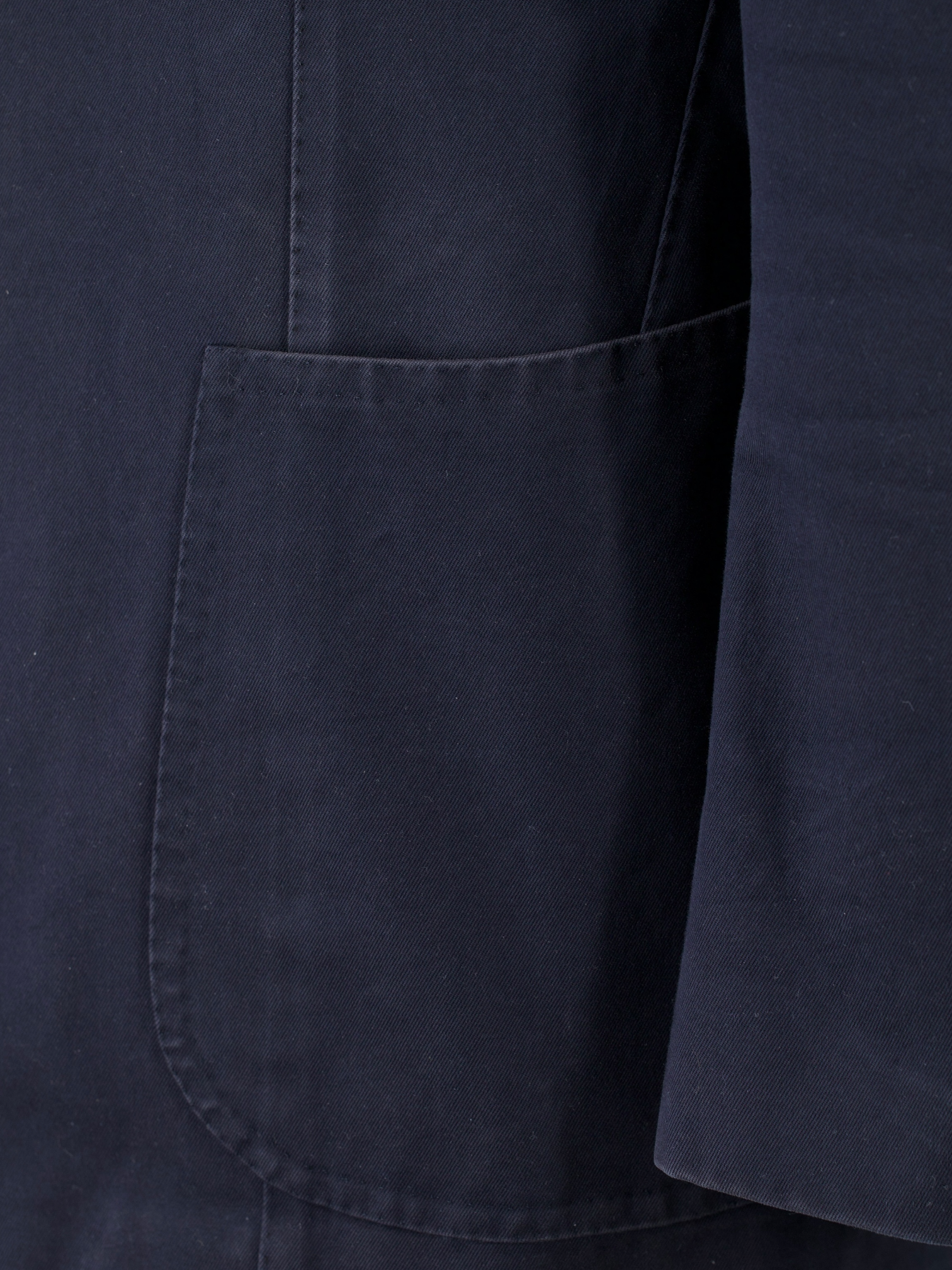
Patch Pocket
The ticket pocket, also known as change pocket, has an old British history. At first it wasn’t even used to store a ticket, as the name indicates today. It became useful before the huge popularity of the railroad, as it was placed on the jackets of equestrians who needed quick access to coins at toll points. Allowing gentlemen to keep their jackets buttoned, this exterior pocket held cash in an extremely convenient way. Ticket pockets were a staple on men’s sturdy country suits before they adapted into the urban suits men wore to commute on a daily basis.
the details of
the trousers
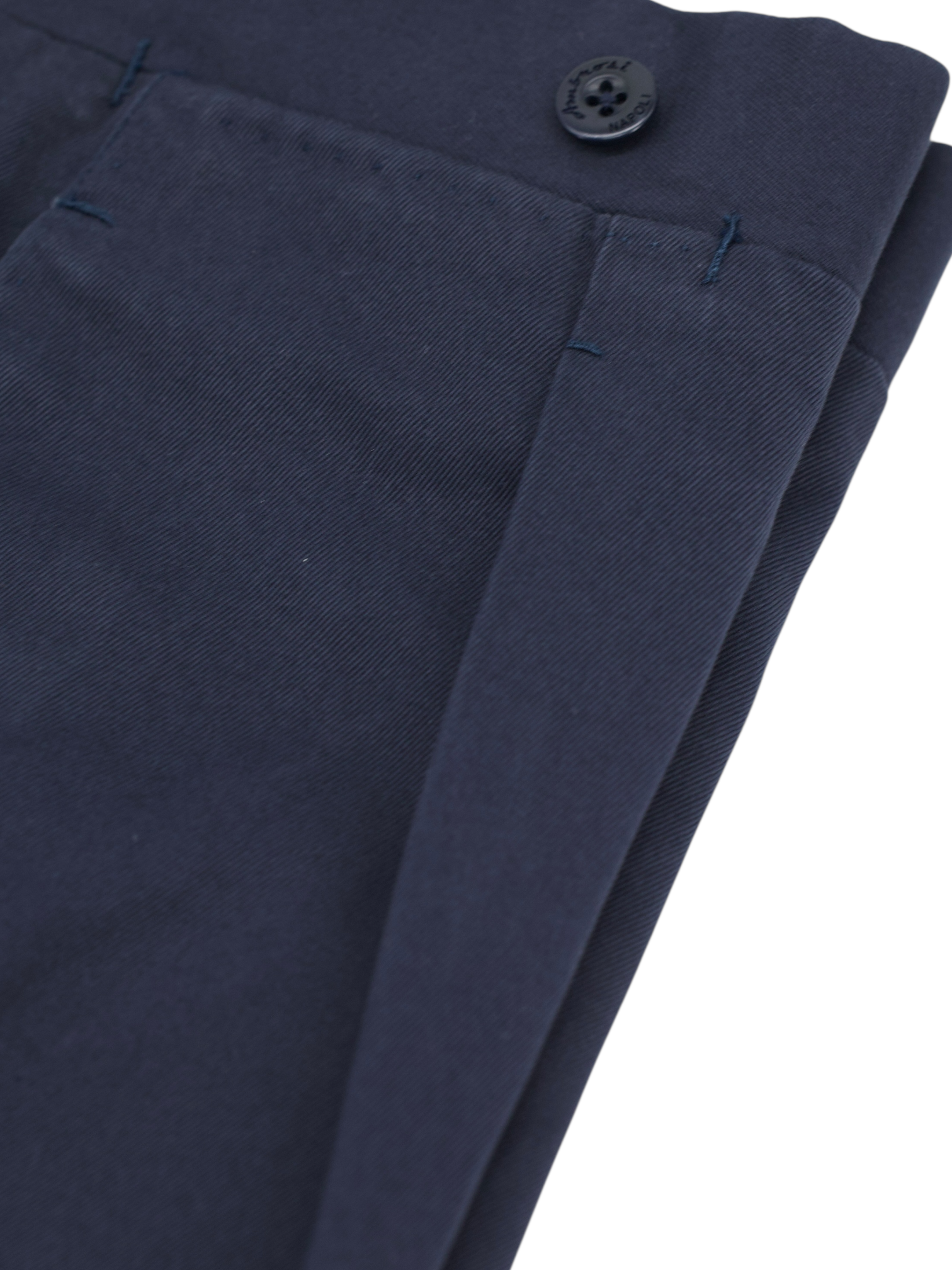
Double Pleated Front
Double-pleat trousers are all about classic elegance. They were a staple in the 1930s and 1940s, an era known for its fuller, more comfortable styles. With two pleats, these pants provide extra room, especially around the hips and thighs, making them great for formal settings. They bring to mind the sophisticated styles of Hollywood icons like Cary Grant, who wore them with effortless charm. Even though slimmer fits have become more popular, double pleats remain appealing for those who appreciate traditional tailoring and timeless style.
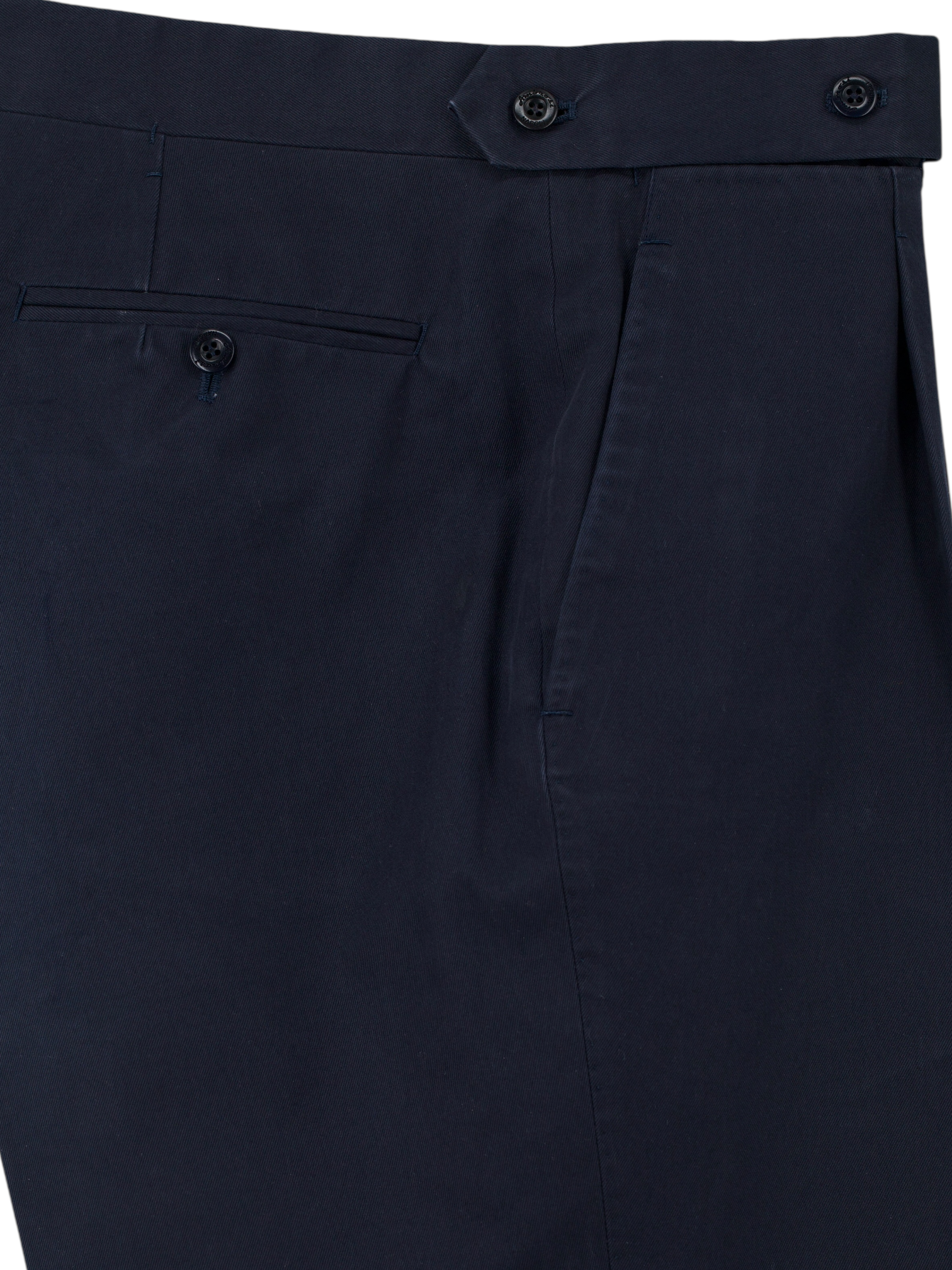
Extended Tab
The extended tab waistband is a classic detail that adds a touch of elegance to trousers. This style features an extra piece of fabric that extends beyond the regular waistband and fastens with a button or hook. The extended tab provides additional security and a neat finish, making it a popular choice for dress pants and tailored trousers. It creates a streamlined appearance, eliminating the need for a belt and allowing the waistband to lie flat against the body.
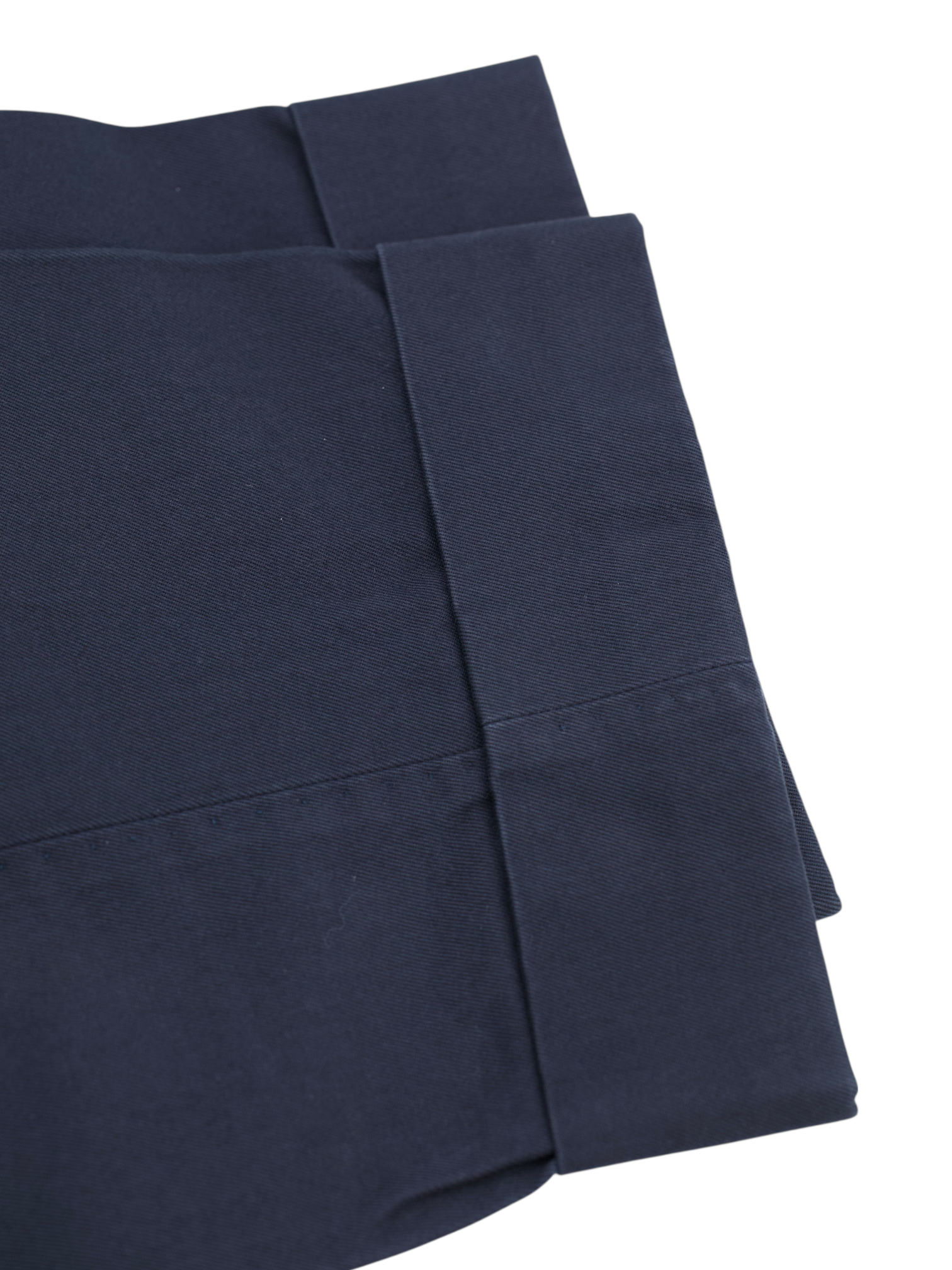
Turn-Up (Cuffed) Hem
The turn-up hem, or cuffed hem, is a classic style where the fabric at the bottom of the trousers is folded outward to create a visible cuff. This style originated with Edward VII in the late 19th century, who had his trousers tailored with cuffs to prevent them from getting muddy, sparking a trend among the fashionable elite. In the 1920s and 1930s, turn-ups became a symbol of wealth and sophistication, as having extra fabric was seen as a luxury. This association continued after World War II when wearing turn-ups subtly indicated affluence in an era of fabric rationing. Today, turn-up hems are a nod to their historical roots, offering a touch of classic elegance and enhancing the overall appearance of formal and tailored trousers.


size
54 IT / 44 US / Extra Large


 Curator's Description
Curator's Description Materials
Materials